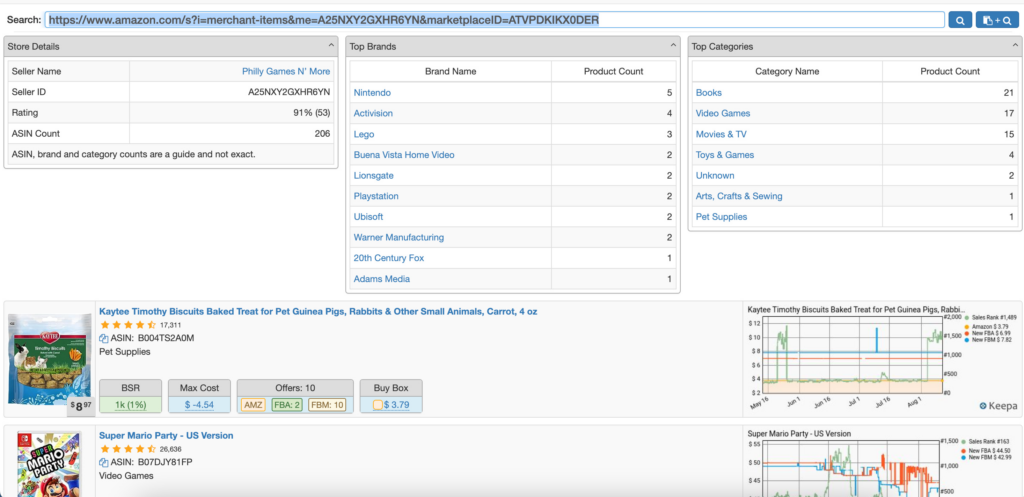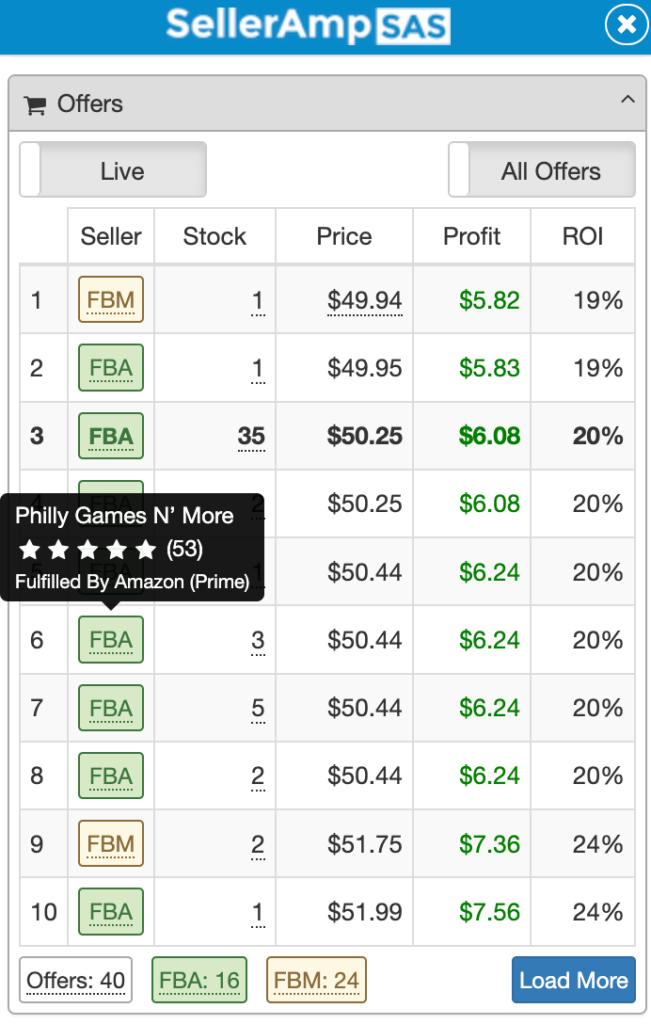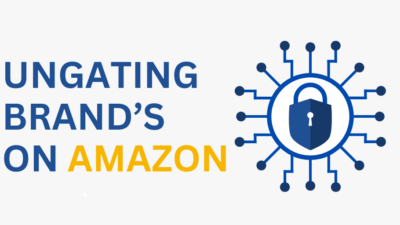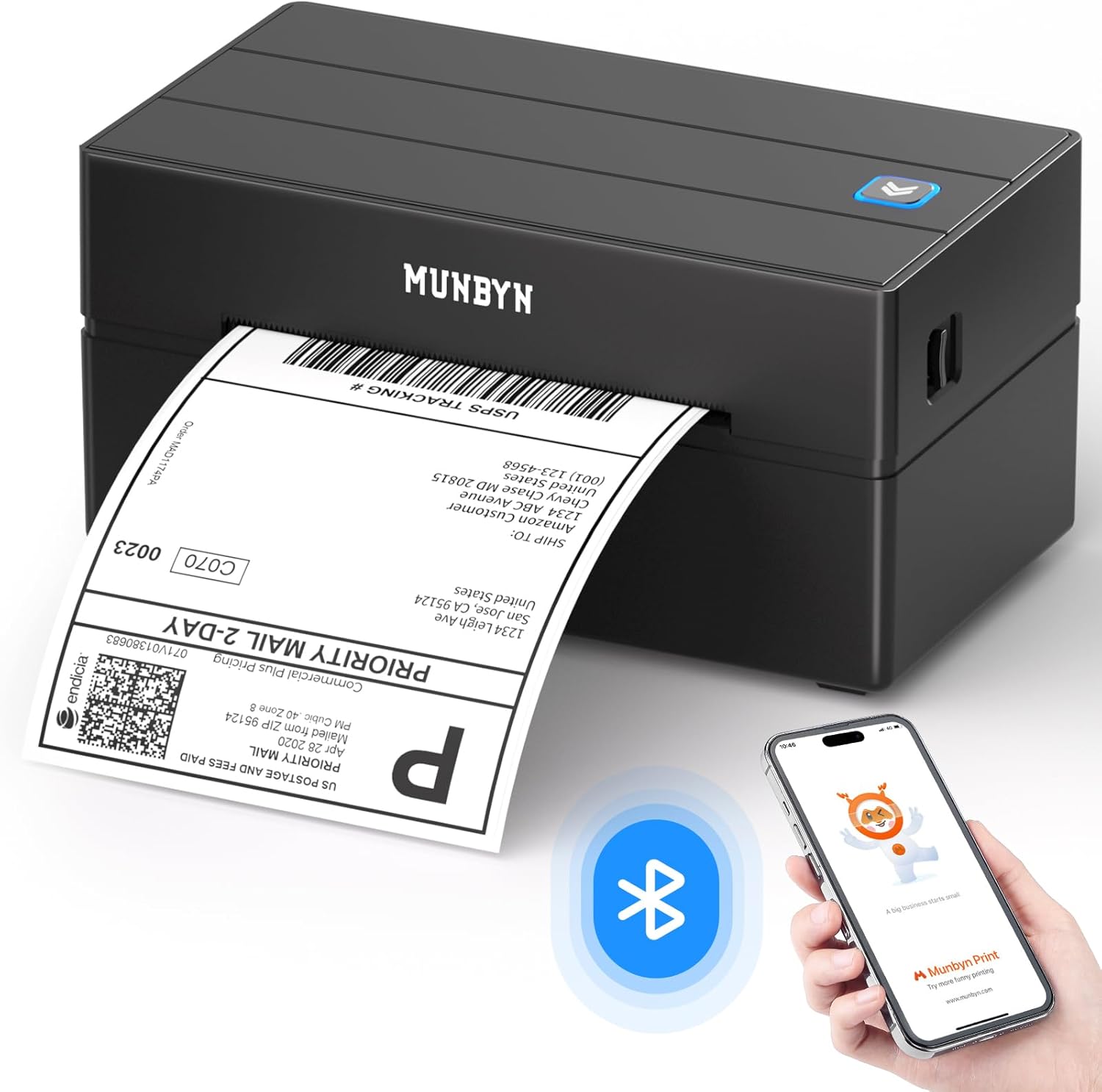Reverse Sourcing / Storefront Stalking – A Beginner’s Method
Welcome back to this weeks episode in the Mastering Online Arbitrage series! So far we’ve covered newsletter sourcing, manual sourcing, Replens and Keepa, all essential methods for finding profitable products.
Today, we’re diving into Storefront Stalking, also known as Reverse Sourcing, which is one of the most popular and widely used sourcing techniques, particularly among beginners. It’s simple, effective, and easy to get started with, but it also has its downsides.
Let’s get to it!

What is Storefront Stalking?
Storefront Stalking is a method in which you find a seller’s store on Amazon, SellerAmp, or Keepa and then analyze their inventory to try and source the same products at a profitable price.
This method is highly popular amongst beginners because:
✔ It’s easy to understand
✔ It’s easier to find profitable products compared to manual sourcing
✔ It helps new sellers learn what types of products, brands and websites are good for sourcing
Storefront Stalking is a great beginner method, but as you become more experienced, you’ll likely move away from this method. The biggest reason? It’s oversaturated. Many sellers use Storefront Stalking, meaning you’re often competing for the same products after other sellers have found the deal.
That said, it can still be a useful ally to your sourcing armory, especially when combined with other sourcing methods. Let’s look at how to do it properly!
How to Storefront Stalk?
Step 1: Set Your Criteria
This can be flexible, but i would recommend starting with the below criteria and changing with your own preference:
- Over 50 5-star reviews
- No clear niche
- Higher ASIN count
Step 2: Choose Your Storefront Stalking Method
Using SellerAmp
• Find a product on SellerAmp.
• Click on the active sellers list on the product analysis page.
• Using your criteria, identify a seller
• Click on the seller’s name to open their storefront, select a seller that looks like they’re doing online arbitrage and not wholesale (more Asin’s and lesser stock).
• Go through their inventory and check for potential deals.
Using Amazon Directly
• Copy the Seller ID from SellerAmp storefront searches.
• Paste it into the Amazon search bar.
• This will bring up the seller’s storefront, where you can browse their products.
Using Keepa
• Go to the Keepa data tab.
• Select seller look up.
• Paste seller ID into the presented tab.
• This will bring up the seller’s storefront, where you can browse their products.
Step 3: Finding The Deals
• When you find a potential product, start searching for it on Google by right clicking on the highlighted name and searching on google or by using the “G” tab in SAS .
• Look for the lowest price possible by checking different retailers.
• Stack voucher codes and discounts to maximize profitability.
• Check for bundles, sometimes you can buy items separately and list on a correctly branded bundle listing.

Tips & Hacks for Storefront Stalking
Here are a few ways to speed up the process and increase your success rate:
1. Use ArbiSource with SellerAmp
• ArbiSource integrates with SellerAmp, allowing you to check multiple retailer websites directly from SellerAmp.
• This saves time—you won’t have to manually search Google for each product.
• (I’ll cover ArbiSource in more detail in a future blog post.)
2. Save Storefront IDs in Excel
• When you find a good storefront, save the Seller ID in a spreadsheet.
• You can revisit their store regularly to see what new products they are selling.
• This makes Storefront Stalking much faster over time.
3. Get Alerts for New Stock
• There are certain software tools/bots that notify you when a seller uploads new stock.
• This can help you stay ahead of the competition by sourcing products as soon as they’re added. However, not all sellers agree with this method. Some see it as unfair, and I understand that viewpoint.

Pros & Cons of Storefront Stalking
Pros:
✅ Beginner friendly – An easy way to start finding products.
✅ Great for learning – Helps you understand what works in online arbitrage.
✅ Can uncover replenishable products – Some items can be restocked consistently.
✅ Helps build your sourcing network – You’ll discover new brands, websites, and retailer newsletters.
Cons:
❌ Highly saturated – Many sellers use this method, leading to fierce competition.
❌ Not a unique sourcing strategy – You’re relying on someone else’s hard work.
❌ Often too late to the deal – The best discounts may already be gone.
❌ Not sustainable for long-term growth – To scale, you’ll need better sourcing methods.

Final Thoughts
Storefront Stalking is a great beginner friendly method that helps new sellers learn the ropes. It’s easy to do and can also help you build a brand list, website list and your newsletter database.
In my humble opinion, it should not be your primary sourcing method. The best arbitrage sellers focus on manual sourcing, software tools, and newsletter sourcing to find unique, untapped deals. That said, I still use Storefront Stalking occasionally, especially when I need inspiration.
That’s it for this week’s post, stay tuned for the next blog in the Online Arbitrage series!
You can find other articles in this series here:
Mastering Online Arbitrage – Part 1
Mastering Online Arbitrage – Part 2
Mastering Online Arbitrage – Part 3




